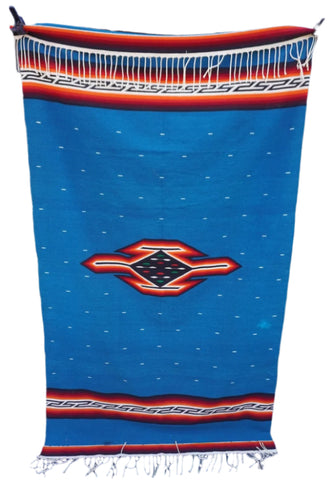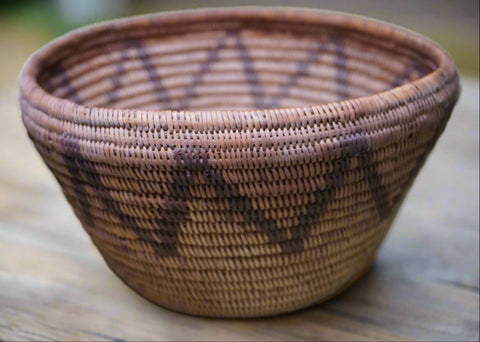Parfleche Rawhide Bag - Blackfoot Tribe A3114
Acquired from a private collection. The bag is 14" x 12" x 3". The tassels are 24" long.
This object is a parfleche (pronounced: “par-flesh”), which is a rawhide container used to carry objects. It was made by an artist from a Northern Plains tribe, and has been with the Denver Art Museum since 1953.
Plains and western American Indians made containers out of rawhide (cleaned and dried animal hide) to store or carry items like moccasins, clothing, or dried food. French traders called these objects "parfleches," from the French words parer, meaning “parry” or “defend,” and flèche, meaning “arrow,” because the hide was tough enough to deflect an arrow, and was also used to make shields.
Parfleches are designed to carry all types of objects. The three common shapes of Sioux parfleches are flat/folded (like this object), box, and tube. Different parfleche shapes are better for carrying different types of objects; for example, a box-shape one would be great for storing moccasins. The sturdy and compact design of the parfleche also makes it ideal for keeping the stored items safe during travel, especially when travelling on horseback. The creation and use of the parfleche developed along with the European’s introduction of horses to the Americas.
Process: The hide used for parfleches is prepared by soaking a fresh hide (usually from cattle or buffalo), scraping away the fur, extra flesh, and bits of remaining fat, and creating a uniform thickness to the hide. The wet hide is then stretched and staked to the ground, or on a frame, and mechanically chopped to break the bonds in the hide. This gives the tough hide some flexibility for folding and refolding when dry. The hide is then formed and folded into the desired final shape. For this particular form, the sides were overlapped and the ends were folded inward, to meet in the middle, and closed with the use of a leather tie. The pigment used for decorating the front of the parfleche was likely created by mixing earth-based pigments and minerals with hide glue (made by extracting the adhesive found in animal bones and skin). These pigments are often made into a "cookie" then used like a piece of chalk on the hide.










